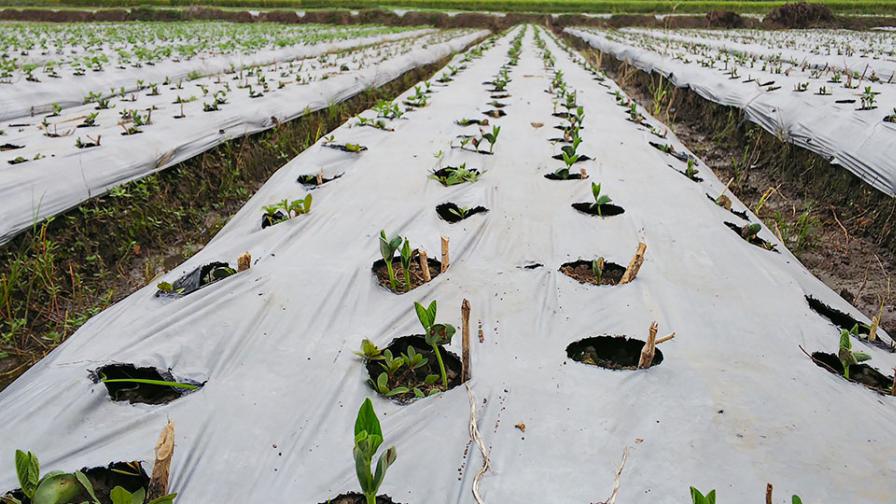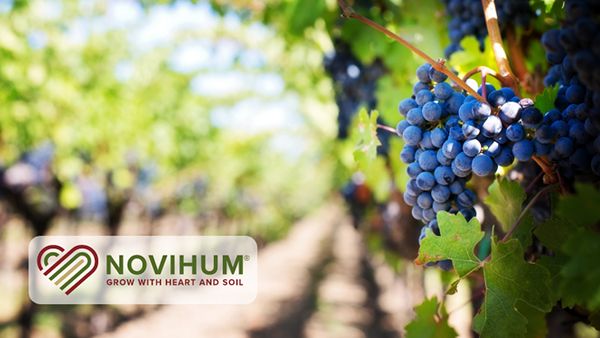Tips and Insights on How To Grow Edamame

Edamame production, while natural to large-scale soybean growers in the Midwest, can also be grown as an alternative crop by vegetable growers across the country.
Carol Miles has long been a fan of edamame, the immature vegetable soybeans that are traditionally consumed in Asian markets. Unfortunately, those “beans on a branch,” as translated from Japanese, are not quite as enthusiastic about growing in her home state of Washington.
The climate in Washington does not suit large-scale production of the crop, according to Miles, the Director of the Northwestern Washington Research Extension Center and a Professor in the Department of Horticulture at Washington State University.
“In the main vegetable production zone in central Washington, the climate is too hot during the day and too cool at night, limiting pollination and pod fill,” she says. “In western Washington, the climate is too cool during the day, which delays pod fill and harvest.”
However, small-scale growers are producing the crop in western Washington for farmers’ markets, Miles says.
“Green bean harvesters can be used to harvest edamame,” she says. “A major difference between edamame and green beans is that edamame pods require a greater strength to remove pods from the stem. But with some minor adjustments to the equipment, harvest can be 80% to 90% with existing equipment.”
Miles advises vegetable growers to harvest the pods while they are a bright-green color.
“If they start to turn yellow,” she says, “the beans are over-mature, and their sugars are turning to starch. Flavor is lost. Grow a quality variety that has good flavor, so that customers can enjoy what they eat and they will return for more.”

Edamame has grown to be a highly sought-after ingredient for dishes.
Long History
Miles had never worked with an alternative crop until 1994, when she conducted edamame variety trials in conjunction with Japanese and U.S. seed companies. “These were the first variety trials with these companies in the U.S.,” she says. “Washington state has very good trade relations with, and exports several crops to, Japan.”
Miles, seeing an opportunity to build on these relations, secured a grant from the Washington State University IMPACT Center, which is focused on increasing the competitiveness of Washington agricultural products in the world marketplace. The trials, which occurred on commercial farms, successfully identified varieties that were productive in eastern and western Washington, tested mechanical harvest with green bean harvesters, and educated growers about edamame.
“I am very glad to know that my work was instrumental in our regions,” Miles says. “It took a significant amount of time for edamame production to become established throughout the U.S., but now I believe it is produced on a large commercial scale in several Midwestern states.”
Edamame production comes naturally for soybean growers, as it is a vegetable soybean. However, some changes are required, Miles says.
“Seed can be fragile if handled roughly, so handle with care,” she advises. “Do not irrigate just after seeding, as seed can struggle to emerge if soil is crusted.”
Available for sale in the frozen vegetable aisle in grocery stores across the U.S., edamame is popular among consumers for a variety of reasons, Miles says: it tastes great; is a healthy food; and is easy to prepare.
“From field to a few minutes in boiling water to the table,” she sums up. “Edamame can be eaten after boiling in water for a few minutes because they have lower levels of trypsin inhibitors, whereas grain soybeans have higher levels and cannot be eaten without extensive cooking or processing.”
Edamame is included in frozen vegetable mixes, sold at farmers markets, and several years ago was featured as an ingredient in McDonald’s salad.
“I think a crop has made it with mainstream America if it is served at McDonald’s,” Miles says.
Alternative Crops Online Series
American Vegetable Grower is aiming to regularly address the topic of alternative crops.
Carol Miles, the Director of the Northwestern Washington Research Extension Center and a Professor in the Department of Horticulture at Washington State University, finds that growing an alternative crop can be relatively straightforward for vegetable growers once all production aspects are determined.
It takes only a few years to at least establish some basic guidelines, she notes, but the real challenge is getting people to purchase and consume a crop that is new to them.
“I read somewhere a few years ago that the average American eats four vegetable crops in one week, and one of these is potatoes,” Miles says. “Introducing a new crop to the market is not an easy or fast task. If it is a new way of growing/marketing/consuming a well-known crop, it is easy to find a market — baby lettuce and kale, icebox-sized watermelon, for example.”
But for a crop that is new to the American palette — even one such as bulb fennel, which Miles has studied in variety trials in northwest Washington and found to be very productive and high quality — it can be a “hard slog,” she says.
To help you learn more about new crops you may want to grow, follow our Alternative Crops online series, where Extension agents like Miles from across the country share production and economic issues and potential successes.











